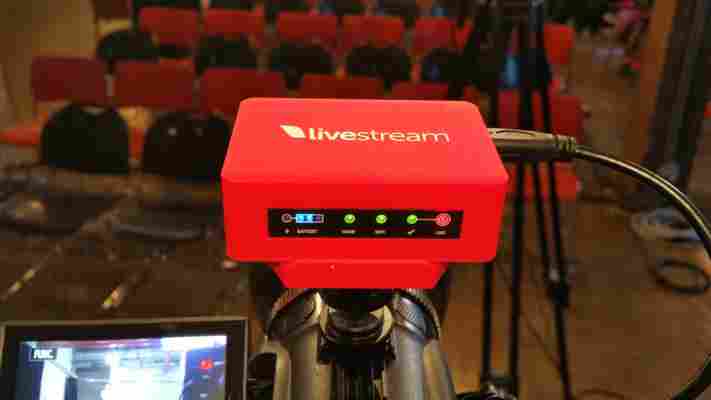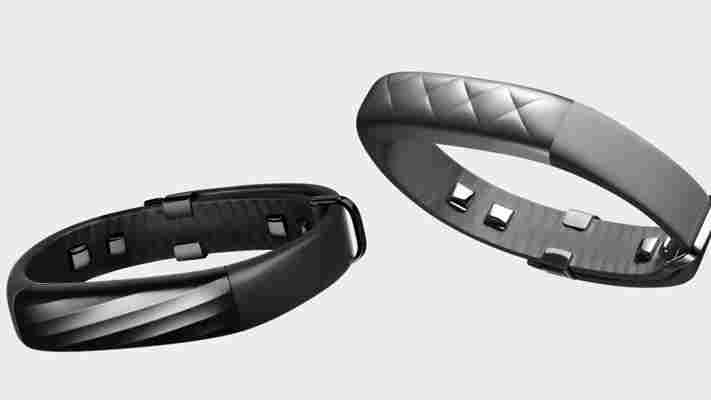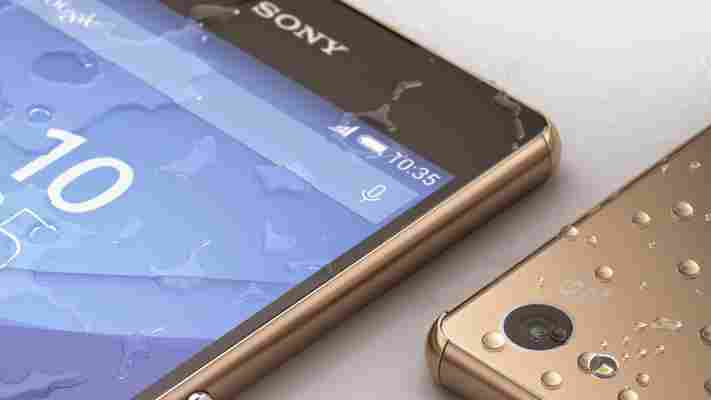Livestream today announced a new video encoder to its hardware product line, the Broadcaster mini . The device works with any camera that has an HDMI port, and connects via Wi-Fi to send live 1080p videos to your Livestream account.

The Broadcaster mini is designed as a sequel to the original Broadcaster video encoder launched three years ago. The mini version measures in at about 2.8 by 2 inches – roughly 1/3 the size of its predecessor. It also bumps streaming speed from 2.3 Mbps to 4 Mbps, and runs on an internal rechargeable Li-ion battery instead of AA batteries. The company estimates battery life to last about two to three hours, and is rechargeable via micro USB.
You can also pair the device through Bluetooth and use the Livestream app to select the channel to air live (if you have multiple channels under the same account) or chat with current viewers. If you don’t want to use your phone, a “Go Live” button the side of the device lets you manually push the feed online.
“We see an opportunity for anyone to make live events accessible for those who can’t physically attend a event,” Livestream tells us. “Be it weddings, presentations, sporting events or marathons, we want to enable people to affordably share their experience with everyone.”
Alongside the announcement of Broadcaster mini, Livestream says it will replace the original Broadcaster with Broadcaster Pro, an updated version that also feature an internal battery and a smaller body, in addition to an ethernet port, built-in LED menu screen, audio input jack and USB port for wireless network adapters.
Livestream says by offering two pricing options, it hopes to encourage more people to explore livestreaming their own events and cater to those who might not need all the bells and whistles from a Pro version.
The Broadcaster mini will ship today for $295; the Broadcaster Pro will go for $495 and is set to arrive in April. The Livestream app is available for free on both Android and iOS .
➤ Livestream
Better late than never? Jawbone’s UP3 to arrive from April 20 following manufacturing delay
Jawbone has finally revealed that its $180 UP3 activity and fitness tracker will arrive for customers in the US on April 20, several months later than originally planned when the product was announced at the end of 2014.

The company said in a blog post that the delay was down to problems with scaling its manufacturing process to meet demand – specifically, some units weren’t up to scratch and weren’t as water-resistant as initially intended.
“We sincerely apologize for the delay and frustration that this has caused, and we are deeply grateful for the patience and continued support of our customers, ” it said. Customers outside the US will have to wait until “later this year”.
Pre-orders will be fulfilled in the order they were received, and Jawbone expects all buyers to receive units by mid-May – anyone ordering now will get their units after all the pre-orders have shipped.
Unfortunately, that’s not quite the end of the matter. As a result of the waterproofing problems, the UP3 isn’t guaranteed for depths of up to 10 meters any more. Instead, it’s resistant to splashes, so it’ll be fine if you’re taking a shower, but it’s no longer suitable for swimming. Naturally, if you’d pre-ordered one for this specifically, you can get a full refund.
Sony launches slimmer, lighter Xperia Z3+ with improved selfie camera
Sony has introduced the Xperia Z3+, an ‘premium’ version of its existing Xperia Z3 handset.

Like its predecessor, the Z3+ is waterproof and dust-resistant (IP 65/68) but features a few small hardware tweaks. For example, both front and rear-facing cameras now use Sony’s Exmor sensor and the selfie camera has been upgraded from 2-megapixels to 5-megapixels. The rear-facing camera is still 20.7-megapixels.
It keeps the same 5.2-inch 1080p display as the Z3, which puts it a little way behind Samsung (S6 and Edge) and LG (G3 and G4) in the resolution stakes, but it does now have an octa-core Snapdragon 810 processor.
On the whole, the specs have all seen a worthwhile bump and the refinement of the hardware means that the phone is now a bit thinner (6.9mm) and lighter (144 grams) than it was before. The downside is slightly reduced battery capacity, but it still offers up a 2,900mAh pack.
On the plus side, the micro USB port has moved to the base of the phone and now doesn’t require you to close a cap in order to keep it waterproof. The magnetic charging pin has also been removed in pursuit of cleaner lines.
Credit: Sony
Given how incremental the upgrade is, the Z3+ is hardly likely to win over anyone who wasn’t enamoured with the previous generation, but with a solid starting point in the Z3, there wasn’t really any need to throw away the design and start again.
Sony says the device will be available globally from June. Pricing hasn’t yet been disclosed.
Read next: LG G4 review: An awesome smartphone for power users, but not for fashionistas
